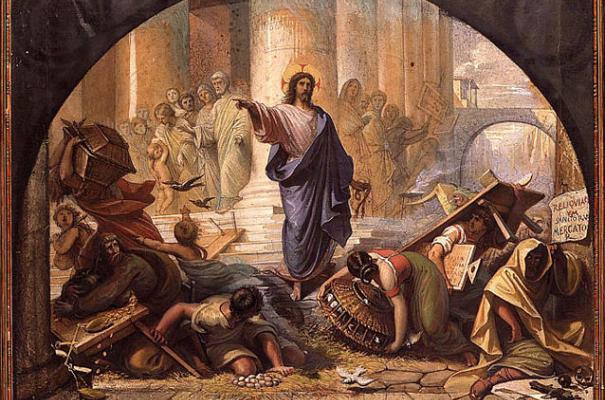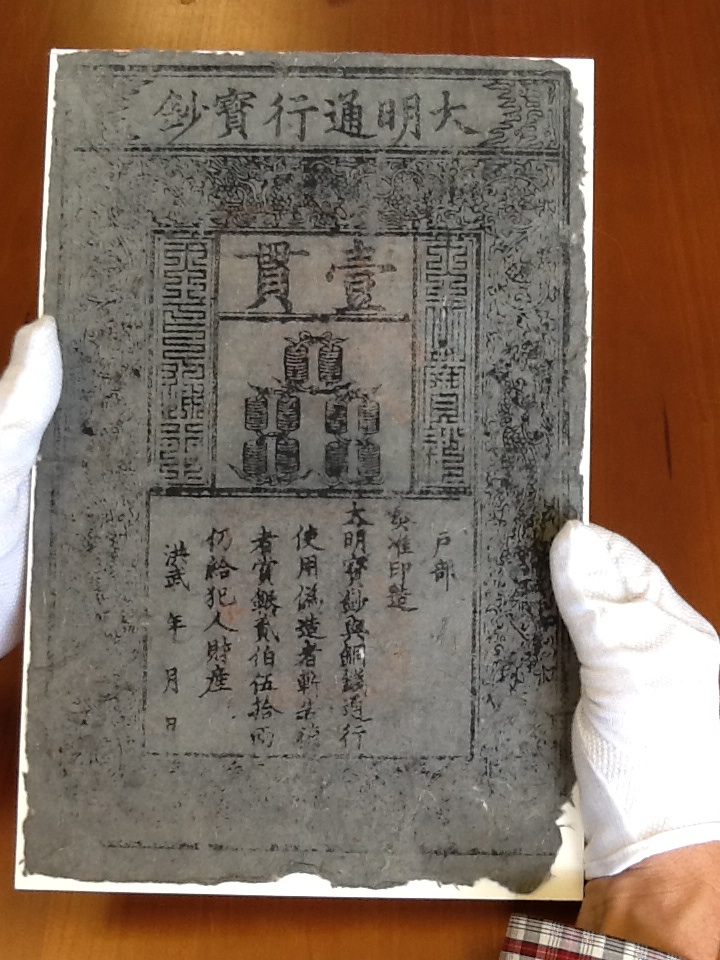10 Most Badass Princesses in History
/Forget Ariel, Jasmine, and Merrida. Disney princesses may have an appeal to us, but history has a lot more to offer when it comes to princesses who are the definition of "badass."
They are not your typical damsels in distress that get abducted by dragons and kept in stone castles. No. These women fought in wars or gained their title by keeping ten steps ahead of their male counterparts. Of course, it also helps a little if you are related to Genghis Khan or a Spartan.
So buckle up and sharpen your swords! We are counting down to the 10 most badass princesses in history!
#10 - Urraca of Zamora
One of the five children of Ferdinand I The Great of Spain, Urraca was destined for greatness as she was able to fend off an advancing army intent on taking her city.
At the death of her father, Ferdinand I, she and her siblings were each bequeathed lands to which they can rule it as their own city-states in peace. Of course, if there is anything that history has shown us is that he – or she – who has the largest amount of land gains control of a significant portion of a territory or country. This was the case with the eldest of Ferdinand’s children, Sancho.
Deciding that he wanted all the lands to himself, Sancho effectively overthrew each of his siblings, leaving Urraca last. When Sancho reached the city-state of Zamora, his little sister was more than prepared, and Sancho’s armies were not able to enter Zamora’s walls. In a final attempt to topple Urraca, Sancho surrounded Zamora to prevent anyone from coming in or out, hoping to starve its citizens and Urraca.
The princess, however, was not deterred by Sancho and set up a plan to assassinate her brother – which was carried out successfully – and take down the family bully.
#9 - Tomoe Gozen
While she was not considered a princess or of royal birth, Tomoe Gozen deserves a spot on this list because being a female samurai is pretty much an equivalent of being a badass warrior princess.
The life of Tomoe Gozen is one of the few to have been ever recorded of a woman who rode to war. While female samurais were not completely uncommon in Japan, they are quite a few, and Tomoe was one who has exhibited an extraordinary amount of talent in martial arts, archery, and swordsmanship.
Her skills, therefore, earned her a spot in one of the history’s most respected and iconic warriors: the samurai.
Her greatest, recorded, the accomplishment was when she fought side by side with her husband in the Gempei War. As records of her life show, Tomoe single-handedly killed a group of advancing soldiers and decapitated their leader as he attempted to dismount her from her horse.
While historical records about her were kept as accurate as possible, her later years became clouded in obscurity. One account has it that, after the Gempei War, Tomoe retired her sword and entered a monastery where she lived out the rest of her life. In another story, because her husband did not survive the Gempei War, it was believed that Tomoe Gozen took her life through the ancient ritual of seppuku.
#8 - Olga of Kiev
She embodies the age-old saying, “Hell Hath no Fury As a Woman Scorned.” Olga of Kiev lived a peaceful and prosperous life in the Ukraine around the 10th century AD until her husband, Igor, was brutally murdered by invading Drevlians.
Believing that Olga was of weak stock because of her gender, the Drevlians forced her to marry one of their princes, which she did consent to. Still scorned by the killing of her husband, Olga led a group of Drevlians to a pit, which was dug overnight, and buried them alive!
She continued her systematic purge of the Drevlians and lured their most elite and influential citizens to bathhouses that she set on fire, burning alive that faction of the Drevlians in her domain – and during her husband’s funeral, she managed to get 5,000 Drevlians drunk and wiped them out.
As a final stroke to her vengeance, she returned all the pigeons that were offered to her as a sign of peace by the Drevlians but not before powdering their feathers with bits of sulfur that burned their town to ashes.
#7 - Nanny of the Maroons
On the shores of Jamaica in the 18th Century, escaped slaves built communities to protect themselves from the British. With the help of a member of the Ghanaian Royal family named Nanny, they were able to fend off the British effectively.
Coming to the shores of Jamaica on her own free will, Nanny helped the escaped African slaves, called Maroons, set up a lookout system across the entire island that would communicate through telegraph should British ships be spotted and prepare to defend their community.
Among many other systems she put in place, Nanny was even able to develop a potent herbal mixture that knocked their enemies out cold by its fumes alone.
Celebrated as a hero, her face can be found printed on Jamaican $500 bills, as well as having her name on several schools, buildings, and institutions around the island country.
#6 - Lili’uokalani
She was the last reigning monarch and Queen of Hawaii. Spending her life on the throne protecting the native people of the islands and fiercely campaigning against the annexation of the United States, Lili’uokalani used brains and diplomacy and avoided violence as a means to maintain sovereignty and independence.
In one move, she attempted to pass an amended constitution that would restore power to the native people of Hawaii as well as grant her more political power to fend off any US involvement in their affairs.
Unfortunately, in 1898, she was forced off the throne and Hawaii was finally claimed by the United States. During her lifetime she advocated for peaceful resistance and resolutions to conflict, and despite losing her country to the Americans, she continued to preserve Hawaiian identity by curating all things related to its people and culture.
Not all of us may know this, but among her various contributions to Hawaiian culture was a song that she composed called “Aloha Oe.”
#5 - Zhao Pingyang
Pingyang lived in the 7th century AD when the Sui Dynasty was on the verge of crumbling. Originally, she was not of any royal descent, being only a daughter of a governor.
However, in this turbulent time, her father saw an opportunity to topple the Sui Dynasty through rebellion. As her father amassed a force to take on the Emperor, he warned Pingyang and her husband to leave their home – which was a stone throw’s away from the Emperor’s palace – because they would soon be labeled as enemies of the state and will likely be executed on sight.
Pingyang urged her husband to leave town first to join the rebel army. On the way to meet her husband and her father, Pingyang sold her family’s estate and used the money to raise an army to help bring down the Sui Empire.
Eventually, she began to lead an army of 700,000 soldiers from one victory to the next that the Emperor assembled a special force just to kill her. Unfortunately for the Sui forces, Pingyang and her army were able to rout them, destroying the Emperor’s hopes of ridding the rebellion of their female leader.
The Sui Dynasty was later toppled and replaced by the Tang Dynasty with Pingyang’s father as the country’s new emperor.
In honor of her daughter’s victory and contributions to the successful rebellion, the Emperor commemorated her with a military parade and bestowed her with the title of “Zhao, ” and she was crowned as princess of the Tang Dynasty. She was only 20 years old.
#4 - Chiomara
At the height of the Roman Empire when they marched from one country to the next; conquering, pillaging, and abducting women, they came across a tribe of people that were on their list of subjugating next.
As part of bringing the tribe to their knees, the Romans abducted a woman named Chiomara who was, incidentally, the wife of the chief.
While with the Romans, Chiomara had to endure some abuses and sexual assaults. One centurion promised Chiomara that she would be returned to her tribe if a ransom in gold would be paid in her exchange.
Eventually, the tribe agreed to pay her ransom and she was returned. While the centurion was busy counting the gold, Chiomara ordered her rescuers to behead the centurion, and they did. To add more insult to injury, Chiomara took the head of the centurion and carried it like a trophy as she walked back home. Meeting her husband, the chief, she throws the centurion’s head at his feet and declares, “Only one man who has lain with me shall remain alive.”
#3 - Isabella of France
Called the “She-wolf of France,” Isabella had it hard from the beginning when she was married to her, presumably homosexual husband, Edward. It was even said that to keep her from losing power, she had to also build an alliance with Edward’s lover.
It was when Edward found a new lover that Isabella’s life went upside down.
During a failed skirmish in Scotland after the death of William Wallace, Edward suddenly decided to flee and abandoned Isabella and her entourage. Before they were captured by the advancing Scottish army, Isabella, her entourage, and a few knights that stayed with her managed to steal boats to escape back to England.
Unfortunately, Isabella did not receive a warm welcome back home. Her lands and her many estates were confiscated, and her household staff were thrown in jail. To add more salt to the wound, her children were sold off to her political enemies.
Sensing that trouble was closing in on her, Isabella regrouped in her home country of France and raised an army and returned to England to overthrow Edward and his new lover, Hugh. She was later joined by multiple factions during her campaign who were equally fed up with Edward.
Sensing that they are close to being cornered, Edward and Hugh fled but were caught. Hugh’s father, who was Edward’s adviser and Isabella’s fiercest political enemy, was also captured and sentenced to be dragged by a horse, hanged, and decapitated.
Hugh suffered a much harsher fate. Like his father, he was dragged by a horse, hanged until he was mostly dead, then disemboweled and decapitated with his head put on a spike on display at the London Bridge.
Due to Edward’s existing political influence and allies outside of England, Isabella had no choice but to place him behind bars where, according to historians, he “accidentally died.”
#2 - Khutulun
She was the real Warrior Princess, and that title was well deserved. After all, what other title could you be given if you were the great, great granddaughter of Genghis Khan and your family ruled a third of the globe for centuries?
Known for her independent spirit, Khutulun was a Mongolian Royalty whose reputation preceded her wherever she went. Part of her life was chronicled by Marco Polo himself where he took note of her incredible abilities in wrestling among many other impressive skills.
Her political ambitions were fueled by her father from whom she learned the fierce military strategies of the Mongol army.
Naturally, her father wanted her to marry and bear children to carry on the legacy of her bloodline but, not wanting to be married off to anyone, Khutulun issued a challenge to anyone wishing to court her: that he should beat her in wrestling before she consents to be betrothed.
Another condition was that if a man lost to her challenge, he must give her a horse.
She ended up with 10,000 horses before she finally consented to be wed.
#1 - Rani Lakshmi Bai
Before you ask why Khutulun did not make it to number one, hear us out on this and you will be surprised why Rani Lakshmi Bai landed the top spot on today’s list.
Born in 1835 in India, Lakshmi Bai was the daughter of one of India’s Prime Minister’s aides who gave her the opportunity to grow up in a royal setting. Not content to just sit around and learn needlework or other tasks usually designated to women during that time, Lakshmi Bai spent a great deal of her youth learning to use a sword, mastering archery, and wielding guns.
Married to a prince at the age of 12, Lakshmi Bai’s road to power was being paved for her. Soon enough, her husband became raja, and they adopted a son to complete their family. Unfortunately, her husband died and a certain Lord Ramsay, 1st Marquess of Dalhousie, cited a legislation called the Doctrine of Lapse to justify seizing her family’s lands and further stated that, according to the British government – who was occupying India – Lakhsmi Bai and her son were not of royal descent and therefore was forced out of the throne.
After emotionally and mentally recovering from the trauma dealt with her by the British Empire, she began gathering an army of men and women to rebel against the Empire. Taking on the mantle of their leader, she led her army of rebels head on against British soldiers with her adopted son strapped to her back. You heard that right. Now if that isn’t the most badass thing in history, I don’t know what is.
Labelled by her enemies as “the most dangerous of all rebel leaders,” Rani Lakshmi Bai was eventually killed at the Battle of Gwalior while charging and firing at the man who had shot her in the back.
---
And that wraps up our 10 most badass princesses in history! Let us know what you think by commenting below!
Sources:
http://www.cracked.com/article_19478_5-real-princesses-too-badass-disney-movies.html
https://www.nylon.com/articles/badass-women-in-history
http://flavorwire.com/514284/10-badass-princesses-youve-probably-never-heard-of
http://www.refinery29.com/2016/10/127504/disney-rejected-princesses-jason-porath-book#slide-21




























